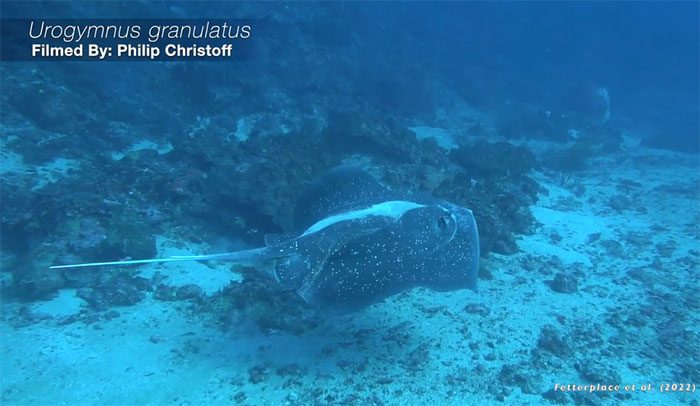Footage recorded in Indonesia and Australia shows at least two species of rays that can produce sounds, but it is unclear how.
Until recently, scientists believed that the suborder Myliobatoidei were silent creatures of the ocean, but a new study published in the journal Ecology in July revealed two exceptions.
Video: Fish Thinkers Research Group
The video below includes three clips recorded by diver Philip Christoff, photographer Javier Delgado Esteban, and marine biologist Johnny Gaskell in Indonesia, Magnetic Island, and Hero Island in Australia, showcasing two species of Urogymnus granulatus and Pastinachus ater producing unmistakable clicking sounds.
“This shows that we do not know everything. We are in 2022, and you can discover something that no one has ever seen just by going out and observing nature,” said lead author Lachlan Fetterplace from the Swedish University of Agricultural Sciences.
Despite this, the research team still does not fully understand how rays produce sounds. “They do not have vocal cords and there is no clear mechanism for producing clicking sounds,” the ecologist added.
In the video, the rays’ spiracles—two openings on their heads used to move water over their gills—appear to contract when the clicking sound is made. This suggests that rays might create friction between the spiracles and surrounding tissues, similar to how we snap our fingers. It is also possible that the spiracles produce sound by creating a vacuum, much like when we click our tongues, Fetterplace explained.

Rays producing mysterious clicking sounds.
Answers may soon be revealed, as many other scientists plan to conduct studies to examine ray anatomy in greater detail.
Fetterplace and colleagues compared the bandwidth and frequency of the clicking sounds with the auditory range of the rays and confirmed that they can indeed hear these sounds, indicating that this is a form of communication.
However, there is another possibility. The loud and rapid sounds may simply be used to startle predators, giving the rays a chance to escape.
Currently, there are about 220 known species of rays, divided into 10 families and 29 genera, with 45 species listed as “endangered” due to the consequences of uncontrolled fishing.





















































